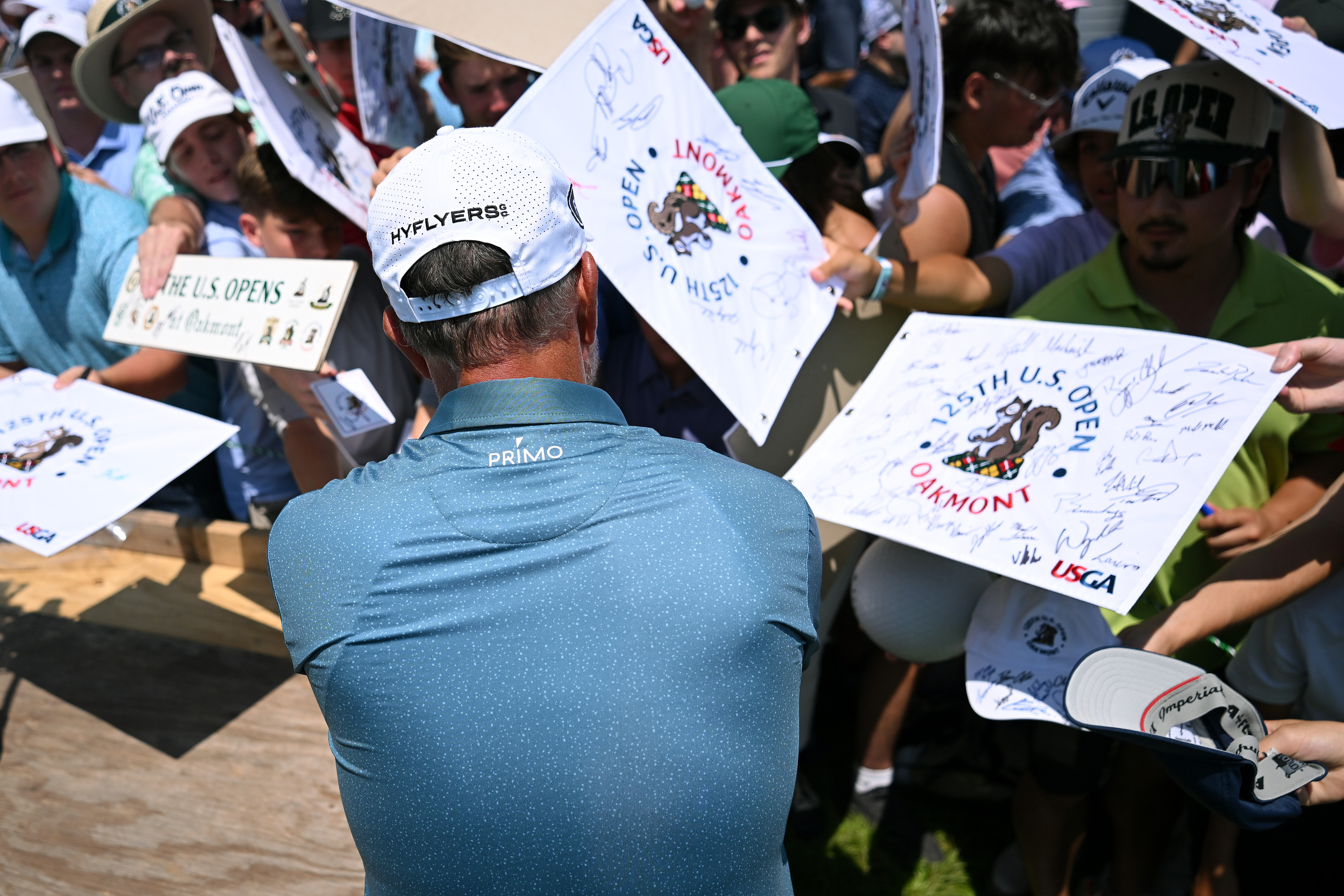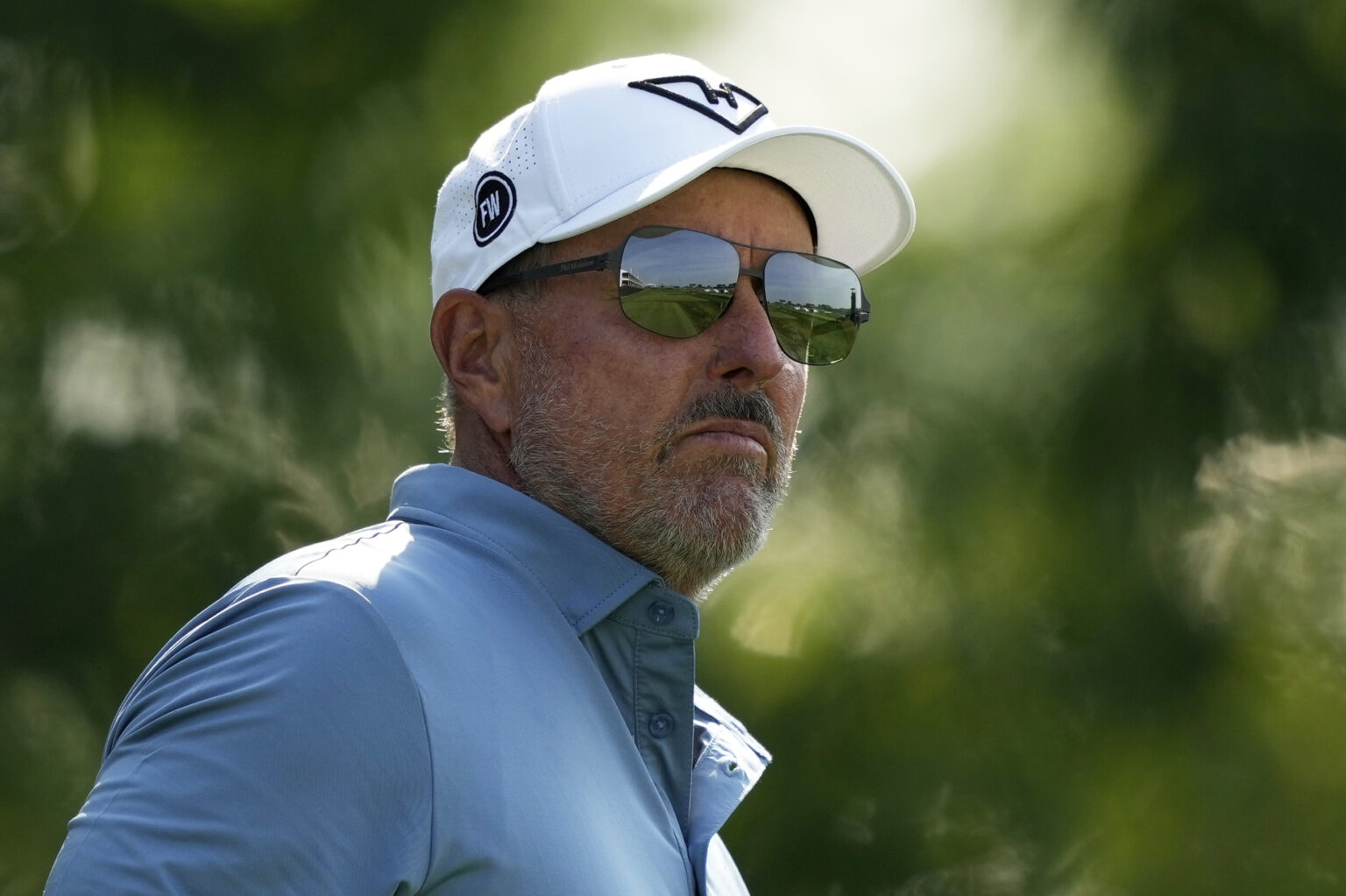Phil Mickelson’s U.S. Open Journey: From Promising Rookie to Legendary Veteran
OAKMONT, Pa. – The story of Phil Mickelson’s debut at the U.S. Open begins over three decades ago, when a young, eager college student fought through qualifying rounds to secure his spot in the 1990 championship. That year, on what is often called Golf’s Longest Day, Mickelson competed alongside an 18-year-old David Duval, marking the start of a storied career.
Remarkably, Mickelson celebrated his 20th birthday during that tournament, and even then, the golf world was captivated by his charismatic, left-handed swing. The crowd at Medinah Country Club serenaded him with a lively rendition of “Happy Birthday” behind the 18th green, and he finished as the low amateur, signaling the beginning of a promising journey.
“Just one more year, and I’ll be able to enjoy a few pints at the pub,” he joked to reporters at the time.
Decades Later: A Legend’s Final Chapter?
Fast forward 35 years, and Mickelson, now 54 with streaks of gray in his beard, remains a beloved figure among U.S. Open fans. On a rainy Friday evening at Oakmont Country Club, spectators gathered around him once again, sensing that this could be his last appearance at the tournament-an event that has defined much of his career.
Throughout the day, Mickelson played some of his best golf in recent years, reaching even-par through 14 holes and sitting just three strokes below the projected cut line. With no certainty of his future in the tournament, the stakes were high: this could be his final shot at a U.S. Open victory, as his current exemption expires after the 2025 season.
Climactic Moments and the End of an Era
The cut line was set at 7 over par. After 14 holes on Friday, Mickelson was at 4 over, still in contention. However, the drama intensified when he double-bogeyed holes 15 and 17, adding tension and uncertainty to his final rounds. As one of the last groups on the course, Mickelson’s fate hung in the balance as storm clouds loomed overhead.
Despite the weather and mounting pressure, Mickelson found the fairway on his drive at the 18th hole and approached within 16 feet of the pin. With everything on the line, his birdie attempt rolled just past the hole, forcing him to settle for a par. His tournament ended with a score of 74, totaling 8 over par, just one shot shy of the cut line.
The crowd offered a respectful round of applause, and Mickelson responded with a wave-perhaps a farewell gesture to the fans who have cheered him on through the years.

Legacy and Future Prospects
This year marked Mickelson’s 34th appearance at the U.S. Open, tying him with Hale Irwin for the second-most in history. Only Jack Nicklaus, with 44 appearances, has participated more. As a seasoned veteran among a field where 121 of the 156 competitors were born after Mickelson’s debut, his presence remains a testament to his enduring skill and popularity.
His recent exemption, awarded after winning the 2021 PGA Championship, grants him entry until the end of 2025. With that window closing, this year’s tournament at Oakmont could very well be his final U.S. Open appearance.
Throughout the week, fans rallied around him with cheers and chants: “Let’s go, Phil!” “Come on, Lefty!” “Still hittin’ bombs!” “I love you, Phil!” and heartfelt “Thank you for everything, Phil!”
Though Mickelson declined to speak to the media after his round, he has openly acknowledged that this could be his last U.S. Open. His current world ranking-No. 1,177-reflects a decline in recent competitive success, with no top-tier wins in over four years and his last top-25 finish at the U.S. Open dating back to 2013.
Assessing His Impact and the Road Ahead
Within the golf community, Mickelson’s legacy remains a topic of debate. With six major titles-including three Masters victories-and induction into the World Golf Hall of Fame in 2012, his achievements are undeniable. However, his recent involvement in the LIV Golf circuit, which has caused divisions within professional golf, complicates his legacy.
Despite the controversies, Mickelson continues to draw crowds at major tournaments. His Friday finish-tied for 68th-placed him ahead of 76 competitors, underscoring his enduring appeal.
Looking ahead, Mickelson still has a couple of avenues to participate in next year’s U.S. Open at Shinnecock Hills, where he finished second in 2004. The USGA could extend a special invitation, or he could attempt to qualify through the usual routes. USGA officials, including Chief Championships Officer John Bodenhamer, have indicated that they will evaluate his case closer to the event, emphasizing that Mickelson’s past achievements and current form will be factors in their decision.
Will This Be the End of Mickelson’s U.S. Open Journey?
Mickelson, who turns 55 next week, has expressed uncertainty about his future in major championships. His recent struggles-missing cuts since 2021 and not finishing inside the top 40 in majors since 2023-highlight the challenges he faces in maintaining his competitive edge.
He has openly admitted that Oakmont might be his final U.S. Open, and he remains noncommittal about future attempts to qualify. When asked about his plans for the next five years, he responded, “I don’t know the answer to that.”
A Career Defined by Near Misses and Triumphs
Mickelson’s quest for a career Grand Slam has been a defining aspect of his career. With three major titles under his belt, he has come agonizingly close to completing the set, especially at the U.S. Open, where he has finished as runner-up six times-more than any other player. His most infamous moment came in 2006 at Winged Foot, where a final-hole double-bogey cost him victory after a promising lead.
In recent years, his form in majors has waned. This season, he missed all three cuts and has not posted a top-40 finish in a major since his second-place finish at the 2023 Masters.
As he contemplates his future, Mickelson’s words reflect a sense of uncertainty: “I don’t know the answer to that,” he said last week, leaving fans and analysts alike pondering whether this year’s U.S. Open will be his farewell to the sport’s most challenging stage.

